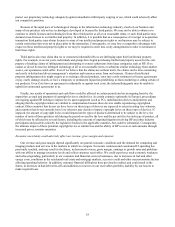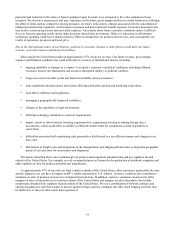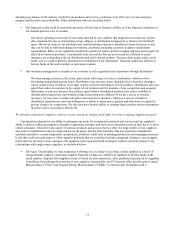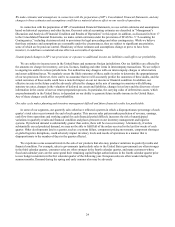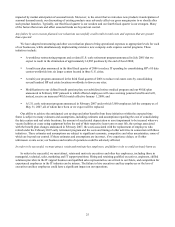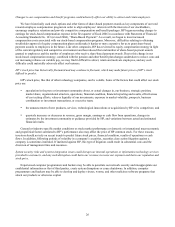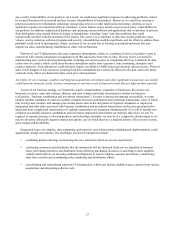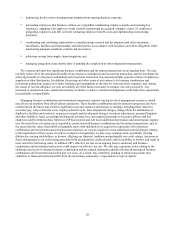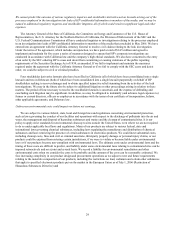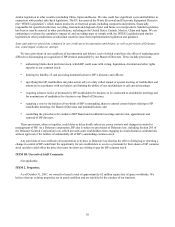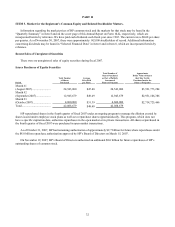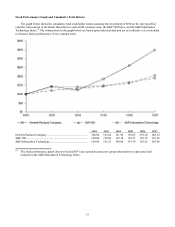HP 2007 Annual Report Download - page 42
Download and view the complete annual report
Please find page 42 of the 2007 HP annual report below. You can navigate through the pages in the report by either clicking on the pages listed below, or by using the keyword search tool below to find specific information within the annual report.• minimizing the diversion of management attention from ongoing business concerns;
• persuading employees that business cultures are compatible, maintaining employee morale and retaining key
employees, engaging with employee works councils representing an acquired company’ s non-U.S. employees,
integrating employees into HP, correctly estimating employee benefit costs and implementing restructuring
programs;
• coordinating and combining administrative, manufacturing, research and development and other operations,
subsidiaries, facilities and relationships with third parties in accordance with local laws and other obligations while
maintaining adequate standards, controls and procedures;
• achieving savings from supply chain integration; and
• managing integration issues shortly after or pending the completion of other independent transactions.
We evaluate and enter into significant business combination and investment transactions on an ongoing basis. We may
not fully realize all of the anticipated benefits of any business combination and investment transaction, and the timeframe for
achieving benefits of a business combination and investment transaction may depend partially upon the actions of employees,
suppliers or other third parties. In addition, the pricing and other terms of our contracts for business combination and
investment transactions require us to make estimates and assumptions at the time we enter into these contracts, and, during
the course of our due diligence, we may not identify all of the factors necessary to estimate our costs accurately. Any
increased or unexpected costs, unanticipated delays or failure to achieve contractual obligations could make these agreements
less profitable or unprofitable.
Managing business combination and investment transactions requires varying levels of management resources, which
may divert our attention from other business operations. These business combination and investment transactions also have
resulted and in the future may result in significant costs and expenses and charges to earnings, including those related to
severance pay, early retirement costs, employee benefit costs, asset impairment charges, charges from the elimination of
duplicative facilities and contracts, in-process research and development charges, inventory adjustments, assumed litigation
and other liabilities, legal, accounting and financial advisory fees, and required payments to executive officers and key
employees under retention plans. Moreover, HP has incurred and will incur additional depreciation and amortization expense
over the useful lives of certain assets acquired in connection with business combination and investment transactions, and, to
the extent that the value of goodwill or intangible assets with indefinite lives acquired in connection with a business
combination and investment transaction becomes impaired, we may be required to incur additional material charges relating
to the impairment of those assets. In order to complete an acquisition, we may issue common stock, potentially creating
dilution for existing stockholders, or borrow, affecting our financial condition and potentially our credit ratings. Any prior or
future downgrades in our credit rating associated with an acquisition could adversely affect our ability to borrow and result in
more restrictive borrowing terms. In addition, HP’ s effective tax rate on an ongoing basis is uncertain, and business
combination and investment transactions could impact our effective tax rate. We also may experience risks relating to the
challenges and costs of closing a business combination and investment transaction and the risk that an announced business
combination and investment transaction may not close. As a result, any completed, pending or future transactions may
contribute to financial results that differ from the investment community’ s expectations in a given quarter.
28


